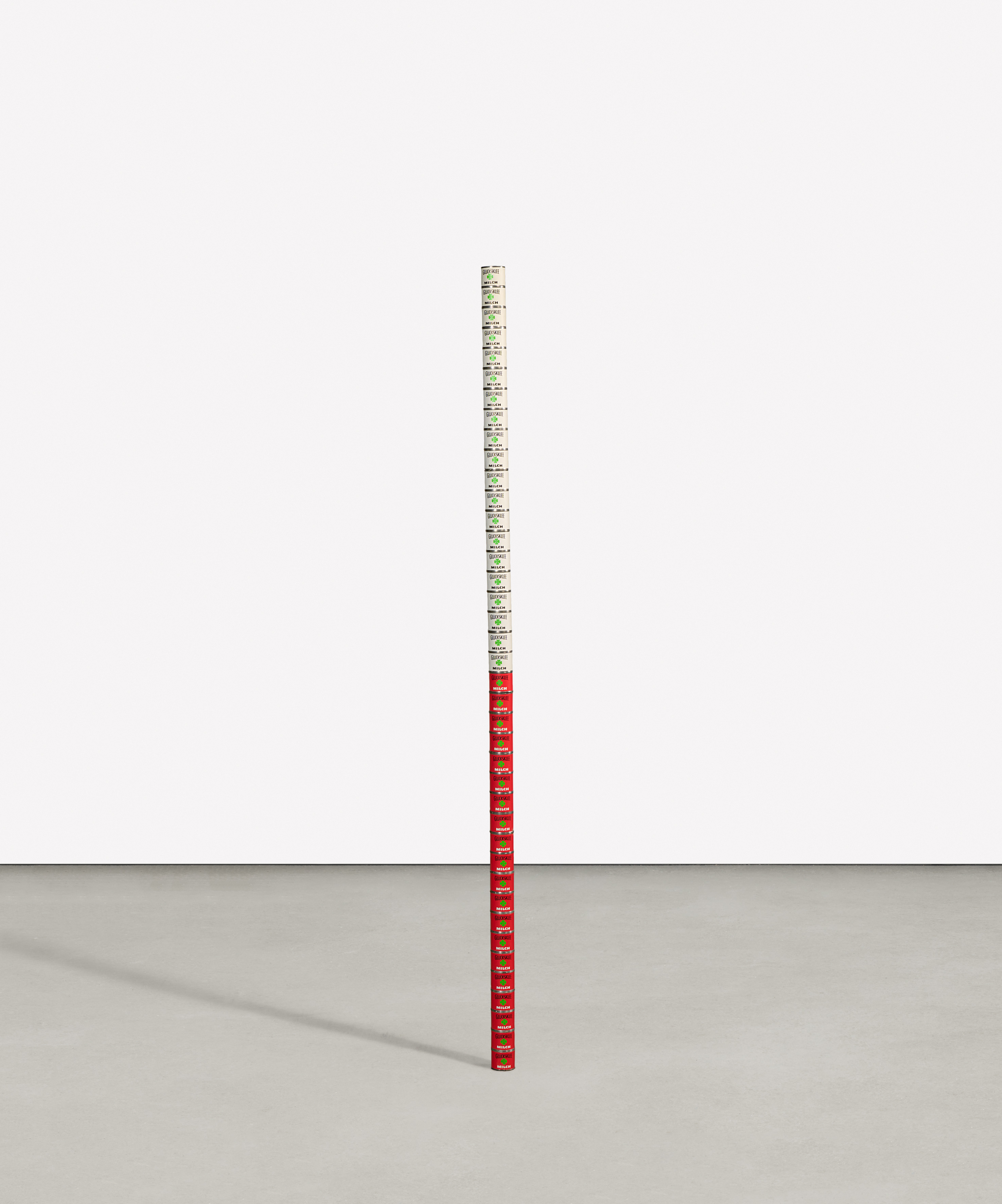BAYRLE, THOMAS
1937 Berlin
Title: Untitled (Glückskleedosenturm).
Date: 1969.
Technique: 40 milk cans, mounted on top of each other.
Measurement: 179,5 x Ø 5 x
We thank the gallery Neugerriemschneider, Berlin for their kind support.
Provenance:
- Kasper König Collection, Berlin (directly from artist)
Exhibitions:
- König Galerie, Berlin 2019
German Pop Art
In the art of the 1960s, American Pop Art artists turned to the aesthetics of consumer goods and translated them into painting and sculpture. Andy Warhol in particular took up the serial production of goods and used them for his Campbell can series. According to Thomas Bayrle, he refers to Warhol and implements this principle in an oversized way, whereby he does not use the famous American soup brand as his subject, but the condensed milk of the manufacturer Glücksklee. The logo with a green four-leaf clover is characteristic of the brand, which also offers its product in cans.
History of creation
Thomas Bayrle explains in an interview how the creative collaboration with Glücksklee came about: "The advertising agency Thompson asked me in '69 if I wanted to do something for Glücksklee. Then I made them a graphic: lucky clover tins made from lucky clover tins, of which there were eight prints. And then I said to myself: "I'd like to have them in plastic." Simply for me as a work. Again, that had nothing to do with Warhol, I simply took the graphic as an opportunity to make a sculpture. It was the big milk can, dark red, which hasn't been around for a long time." (translated) The work from the König Collection consists of 20 white and 20 red cans of the Glücksklee brand, which are stacked on top of each other to form a narrow tower of cans. The composition takes up the company's traditional two-tone label, while forty clover leaves run repeatedly from top to bottom. A monumental work consisting of 4,200 cans, which together form the Glückskleleemark logo, is now in the Städel collection in Frankfurt am Main.
König and Bayrle
Kasper König acquired his first work by Bayrle in 1970 and selected the artist for the exhibition "Von hier aus" in Düsseldorf in 1984. The two worked together at the Städelschule in Frankfurt and, parallel to his work as a professor, solo exhibitions followed at Portikus in 1990 and 1995, where his wife, the artist Helke Bayrle, documented the installation of numerous exhibitions on film from 1992 to 2022. König exhibited the artist in a solo show at Museum Ludwig in 2009 and included Bayrle in 2012 in the presentation "Ein Wunsch bleibt immer übrig. Kasper König zieht Bilanz"
.

